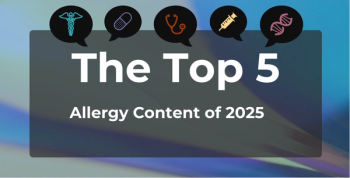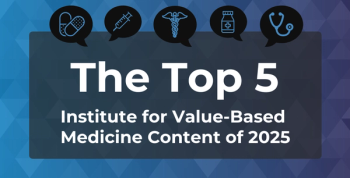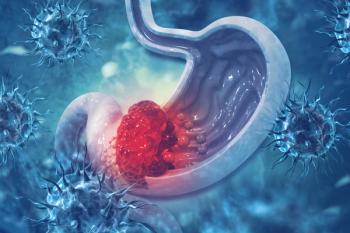
MRD Status Guides Consolidation With Cema-Cel in ALPHA3 Trial: Fred Locke, MD

The ALPHA3 trial is exploring cemacabtagene ansegedleucel's (cema-cel) potential to enhance outcomes in patients who have relapsed/refractory large B-cell lymphoma, particularly those positive for minimal residual disease.
The phase 1 ALPHA (NCT03939026) and phase 1/2 ALPHA2 (NCT04416984) trials are investigating cemacabtagene ansegedleucel (cema-cel), an allogeneic chimeric antigen receptor (CAR) T-cell therapy in relapsed/refractory
“This is something that can certainly lead to durable, long-term remissions, and probably can contribute to cure for these for these patients, so we're really excited about the ALPHA3 study,” said lead investigator Frederick L. Locke, MD, chair, Department of Blood and Marrow Transplant and Cellular Immunotherapy, Moffitt Cancer Center and Research Institute.
In
This transcript was lightly edited for clarity; captions were auto-generated.
Transcript
How are results from the ALPHA1 and ALPHA2 trials helping guide the ongoing phase 2 ALPHA3 trial?
Some of the subsets of patients that we looked at in this clinical trial, and the ALPHA and ALPHA2 trials, give us even more exciting results. One of those is the patients who receive what we call the final dose and treatment schedule and lymphodepleting regimen that we plan to move forward in the ALPHA3 study, which is a randomized phase 3 clinical trial. And of those patients who received the pivotal study regimen, if we call it that, the overall response rate was 67% and the complete response rate was 58%—so in those 12 patients, we had even better responses.
The other subset that I think is really critical here is that patients who had low amounts of lymphoma, low amounts of disease burden in their body, 6 patients who had low levels of disease had complete responses. Patients with less disease are more likely to respond, and that's informing our phase 3 study, the ALPHA3 trial. The ALPHA3 trial is actually moving up allogeneic CAR [chimeric antigen receptor] T-cell therapy earlier in the treatment paradigm, whereas ALPHA1 and gave it as a treatment for relapsed/refractory disease, third or later line.
In the ALPHA3 study, we want to improve outcomes for patients earlier on in their disease course.
Those are the patients that on the ALPHA3 study we're going to randomize to get cema-cel, or just watch and wait and see what happens. We think that with cema-cel, we can increase the number of patients who are cured with upfront therapy by giving it as a consolidation or as a therapy for MRD-positive patients.
It's a single infusion. We give lymphodepleting chemotherapy with fludarabine/cyclophosphamide and ALLO-647, although there's a lead-in portion of the ALPHA3 study to test out whether we need that ALLO-647 or if we can just use fludarabine/cyclophosphamide. And then there's a single infusion of the allogeneic cema-cel CAR T cells. Particularly because of the great results in patients with low tumor burden in ALPHA/ALPHA2, we think that in these MRD patients who have very little disease, but some, that this strategy will work very well to clear any remaining lymphoma.
What is the significance of using MRD status in this patient setting?
We're doing this MRD testing at the end of frontline chemotherapy, and the great news for patients who have newly diagnosed large B-cell lymphoma is that they may be cured with up-front chemotherapy—but only 60% to 70% are cured. This MRD test can be done at the end for patients in complete remission and give us an understanding, tell us whether those patients are likely to progress in the future, their lymphoma is likely to come back. That's important because we can't predict otherwise right now who's likely to progress, and we think that by identifying who's likely to progress, we can intervene with cema-cel to stop that lymphoma from coming back, to give the best chance for cure for our patients.
I think alone, getting the test as a screening tool on ALPHA3 is really, really important, because it will give us a sense of, is this person likely cured? Are they in that bucket of people who are MRD negative and chances are very good that that patient's lymphoma is never coming back. That's good to know. But if it's positive, now we can test out whether intervention with cema-cel can prevent that progression from ever happening.
Newsletter
Stay ahead of policy, cost, and value—subscribe to AJMC for expert insights at the intersection of clinical care and health economics.







































